Customization
The Relearn theme has been built to be as configurable as possible by defining multiple partials
In themes/hugo-theme-relearn/layouts/partials/, you will find all the partials defined for this theme. If you need to overwrite something, don’t change the code directly. Instead follow this page. You’d create a new partial in the layouts/partials folder of your local project. This partial will have the priority.
This theme defines the following partials :
content.html: the content page itself. This can be overridden if you wan’t to display page’s meta data above or below the content.header.html: the header of the content page (contains the breadcrumbs). Not meant to be overwrittencustom-header.html: custom headers in page. Meant to be overwritten when adding CSS imports. Don’t forget to includestyleHTML tag directive in your filefooter.html: the footer of the content page (contains the arrows). Not meant to be overwrittencustom-footer.html: custom footer in page. Meant to be overwritten when adding Javacript. Don’t forget to includejavascriptHTML tag directive in your filefavicon.html: the faviconlogo.html: the logo, on top left hand cornermeta.html: HTML meta tags, if you want to change default behaviormenu.html: left menu. Not meant to be overwrittenmenu-pre.html: side-wide configuration to prepend to menu items. If you override this, it is your responsiblity to take the page’spresetting into account.menu-post.html: side-wide configuration to append to menu items. If you override this, it is your responsiblity to take the page’spostsetting into account.menu-footer.html: footer of the the left menusearch.html: search box. Not meant to be overwrittentoc.html: table of contents
Change the logo
Create a new file in layouts/partials/ named logo.html. Then write any HTML you want.
You could use an img HTML tag and reference an image created under the static folder, or you could paste a SVG definition!
The size of the logo will adapt automatically
Change the favicon
If your favicon is a SVG, PNG or ICO, just drop off your image in your local static/images/ folder and name it favicon.svg, favicon.png or favicon.ico respectivly.
If no favicon file is found, the theme will lookup the alternative filename logo in the same location and will repeat the search for the list of supported file types.
If you need to change this default behavior, create a new file in layouts/partials/ named favicon.html. Then write something like this:
<link rel="icon" href="/images/favicon.bmp" type="image/bmp" />
Change default colors
The Relearn theme let you choose between some predefined color scheme variants, but feel free to add one yourself!
Standard variant
[params]
# Change default color scheme with a variant one.
themeVariant = "" # or themeVariant = "relearn" or themeVariant = "relearn-light"
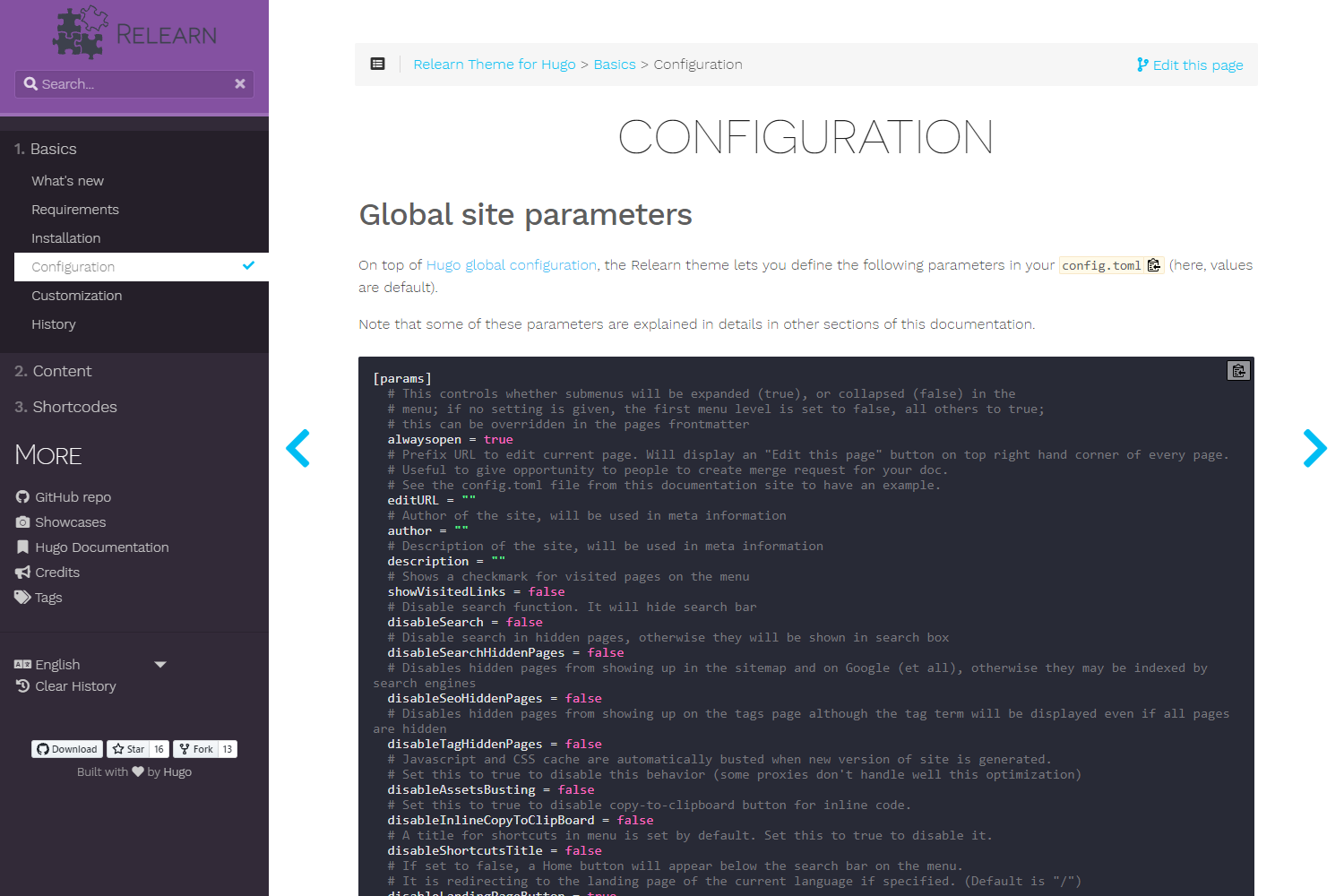
Standard dark variant
[params]
# Change default color scheme with a variant one.
themeVariant = "relearn-dark"
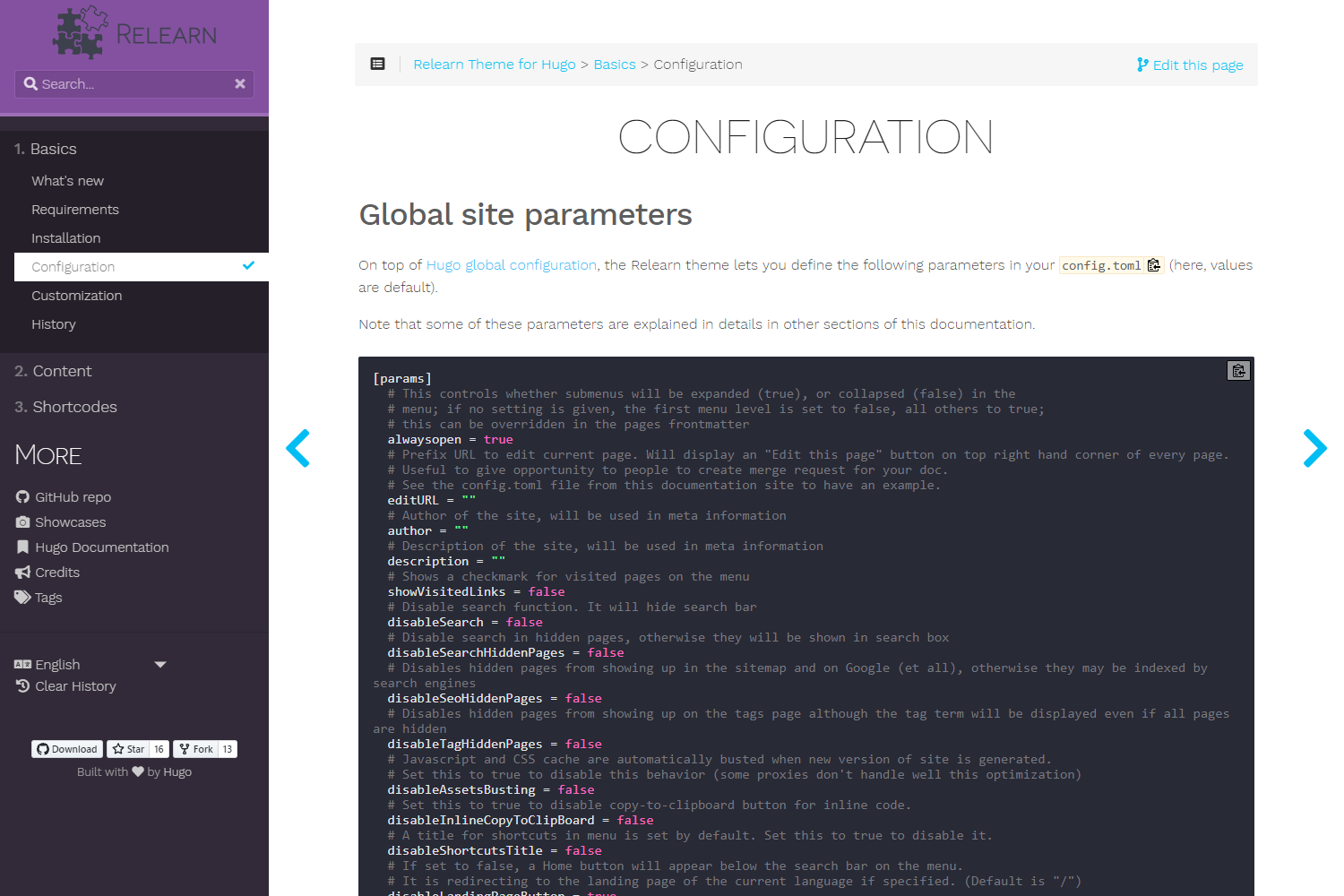
Learn variant
[params]
# Change default color scheme with a variant one.
themeVariant = "learn"
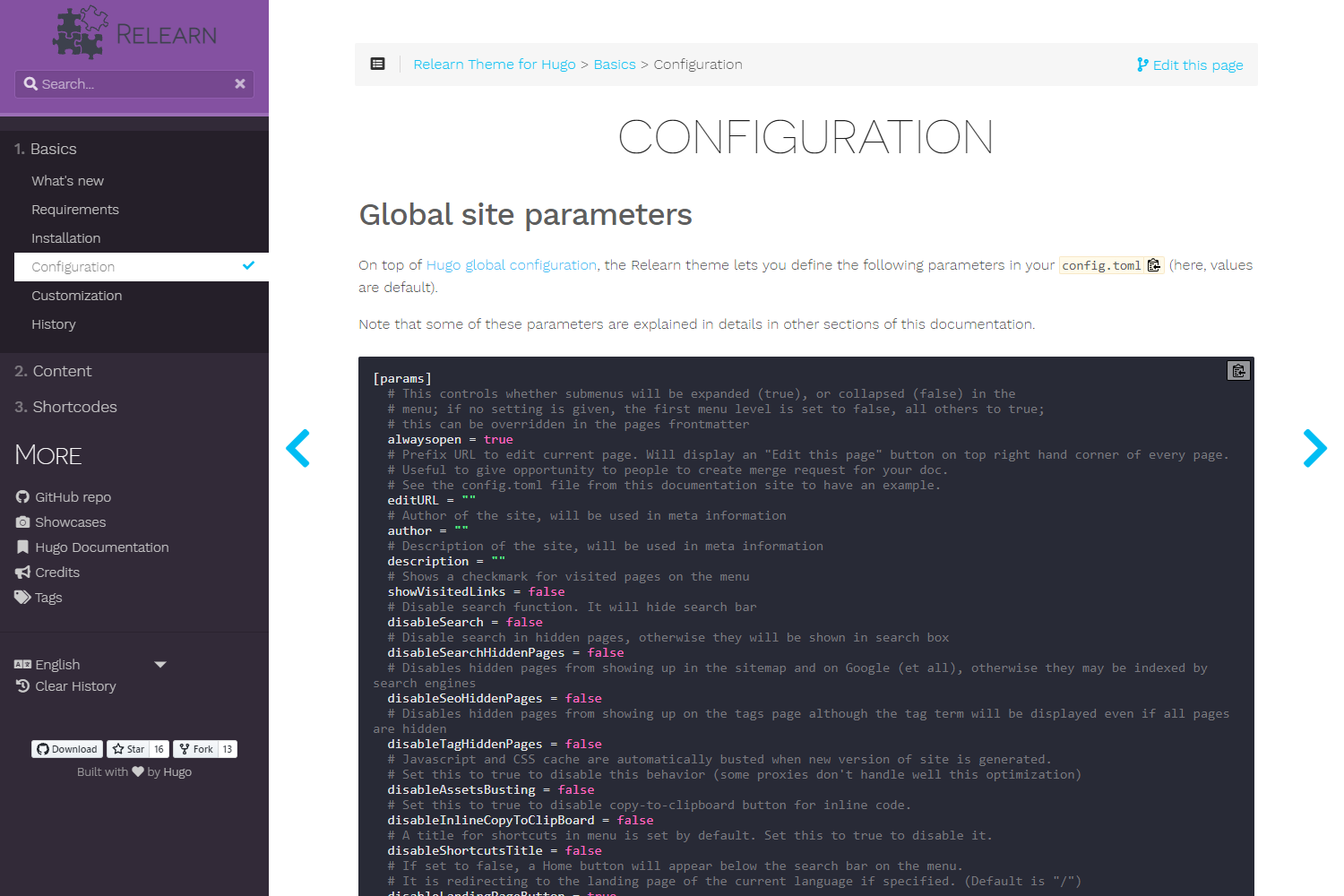
Red variant
[params]
# Change default color scheme with a variant one.
themeVariant = "red"
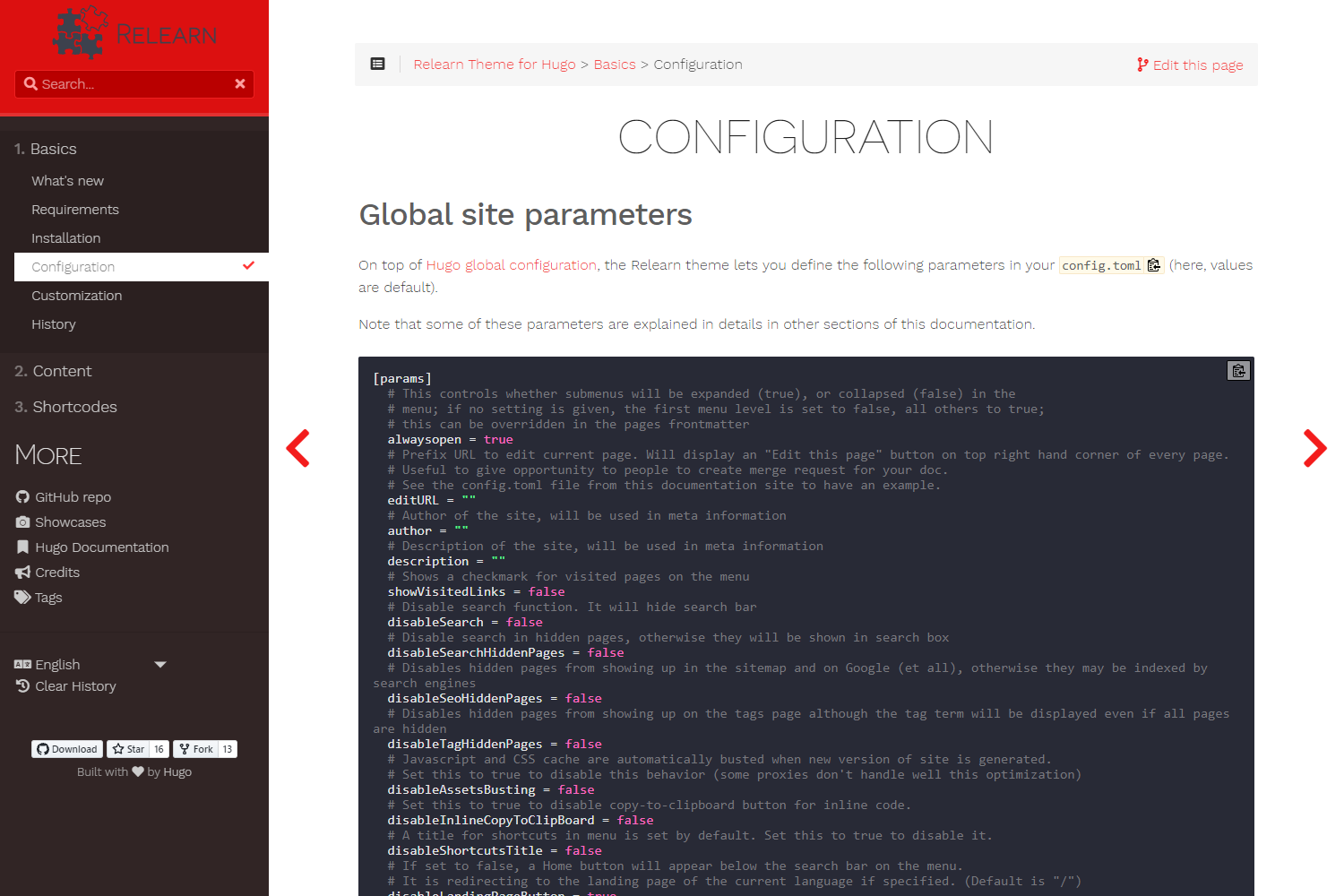
Blue variant
[params]
# Change default color scheme with a variant one.
themeVariant = "blue"
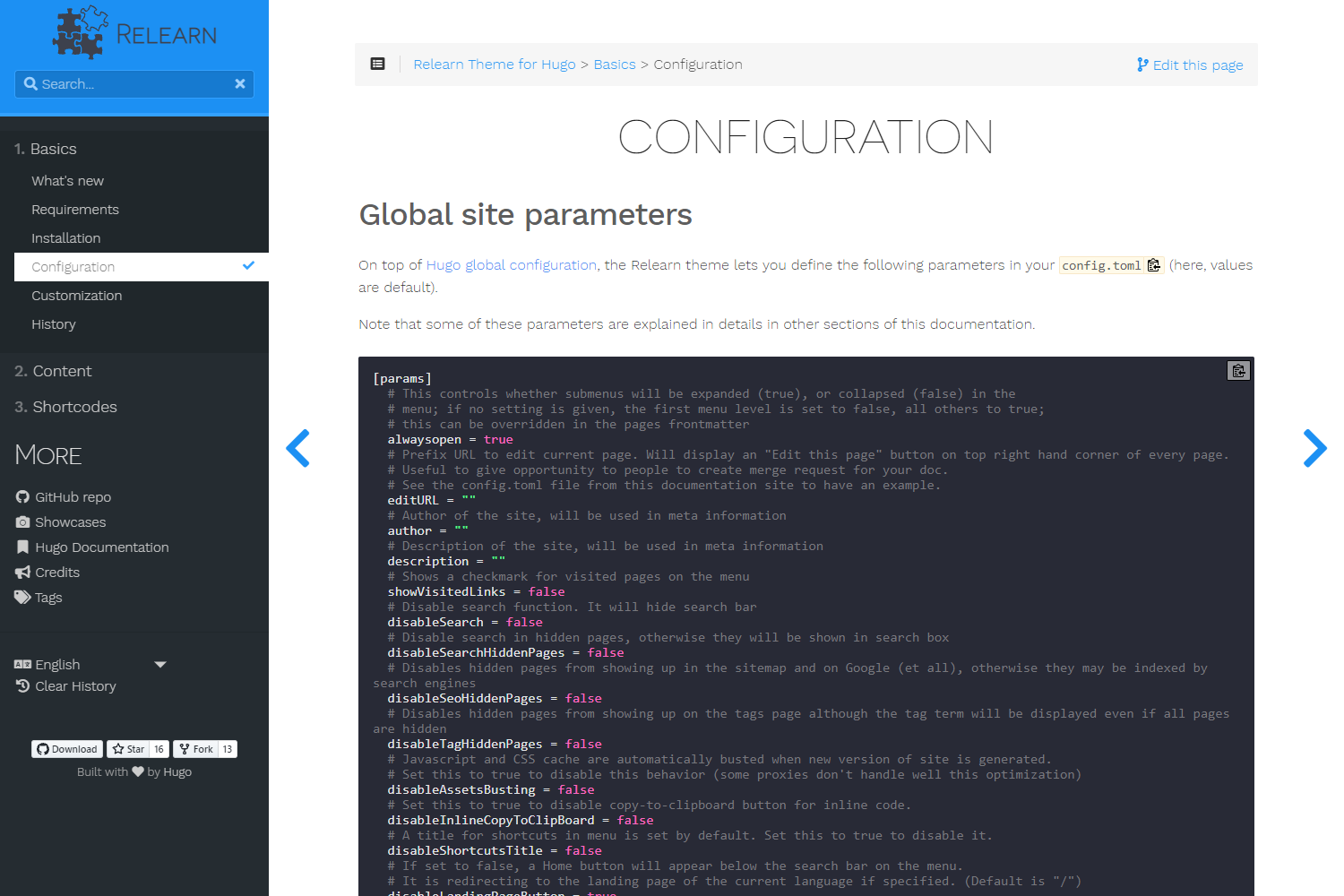
Green variant
[params]
# Change default color scheme with a variant one.
themeVariant = "green"
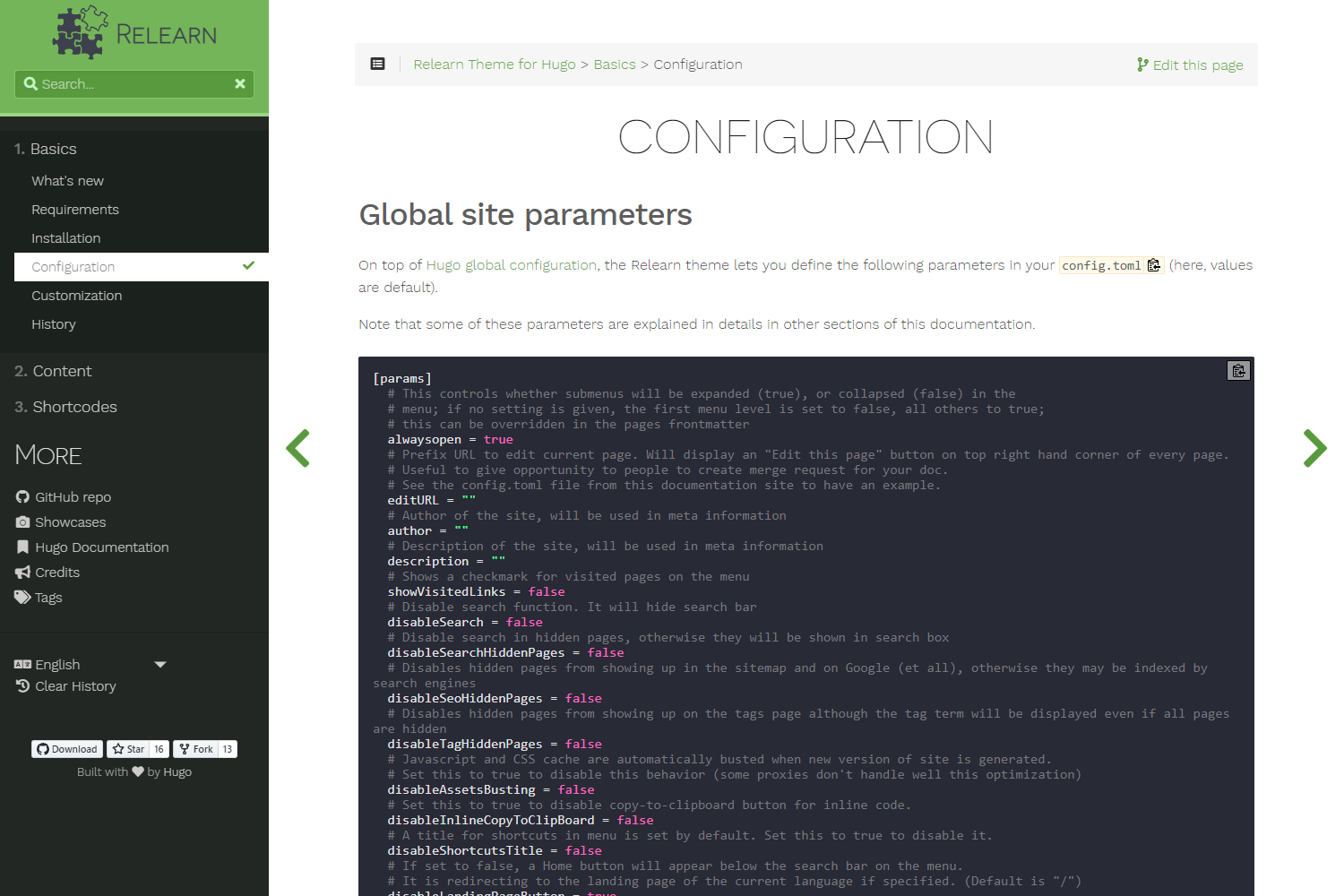
‘Mine‘ variant
First, create a new CSS file in your local static/css folder prefixed by theme (e.g. with mine theme static/css/theme-mine.css). Copy the following content and modify colors in CSS variables.
:root {
--MAIN-TEXT-color: #101010; /* Color of text by default */
--MAIN-TITLES-TEXT-color: #444753; /* Color of titles h2-h3-h4-h5-h6 */
--MAIN-LINK-color: #486ac9; /* Color of links */
--MAIN-LINK-HOVER-color: #134fbf; /* Color of hovered links */
--MAIN-ANCHOR-color: #486ac9; /* color of anchors on titles */
--MAIN-BG-color: #ffffff; /* color of text by default */
/* adjusted to relearn-light chroma style */
--CODE-BLOCK-color: #000000; /* fallback color for block code text */
--CODE-BLOCK-BG-color: #f8f8f8; /* fallback color for block code background */
--CODE-BLOCK-BORDER-color: #d8d8d8; /* color of block code border */
--CODE-INLINE-color: #5e5e5e; /* color for inline code text */
--CODE-INLINE-BG-color: #fffae9; /* color for inline code background */
--CODE-INLINE-BORDER-color: #f8e8c8; /* color of inline code border */
--MENU-HOME-LINK-color: #323232; /* Color of the home button text */
--MENU-HOME-LINK-HOVER-color: #808080; /* Color of the hovered home button text */
--MENU-HEADER-BG-color: #7dc903; /* Background color of menu header */
--MENU-HEADER-BORDER-color: #7dc903; /*Color of menu header border */
--MENU-SEARCH-color: #efefef; /* Color of search field text */
--MENU-SEARCH-BG-color: #3d414d; /* Search field background color (by default borders + icons) */
--MENU-SEARCH-BOX-color: #efefef; /* Override search field border color */
--MENU-SECTIONS-ACTIVE-BG-color: #202028; /* Background color of the active section and its children */
--MENU-SECTIONS-BG-color: #282830; /* Background color of other sections */
--MENU-SECTIONS-LINK-color: #bababa; /* Color of links in menu */
--MENU-SECTIONS-LINK-HOVER-color: #ffffff; /* Color of links in menu, when hovered */
--MENU-SECTION-ACTIVE-CATEGORY-color: #444444; /* Color of active category text */
--MENU-SECTION-ACTIVE-CATEGORY-BG-color: #ffffff; /* Color of background for the active category (only) */
--MENU-VISITED-color: #506397; /* Color of 'page visited' icons in menu */
--MENU-SECTION-HR-color: #606060; /* Color of <hr> separator in menu */
/* base styling for boxes */
--BOX-CAPTION-color: rgba( 255, 255, 255, 1 ); /* color of the title text */
--BOX-BG-color: rgba( 255, 255, 255, .833 ); /* color of the content background */
--BOX-TEXT-color: rgba( 16, 16, 16, 1 ); /* fixed color of the content text */
}
Then, set the themeVariant value with the name of your custom theme file. That’s it!
[params]
# Change default color scheme with a variant one.
themeVariant = "mine"
Multiple variants
You can also set multiple variants. In this case, the first variant is the default choosen on first view and a theme switch will be shown in the menu footer.
[params]
# Change default color scheme with a variant one.
themeVariant = [ "relearn-light", "relearn-dark" ]
If you want to switch the syntax highlightning theme together with your color variant, generate a syntax highlighting stylesheet and configure your installation according to Hugo’s documentation, and @import this stylesheet in your color variant stylesheet. For an example, take a look into theme-relearn-light.css and config.toml of the exampleSite.